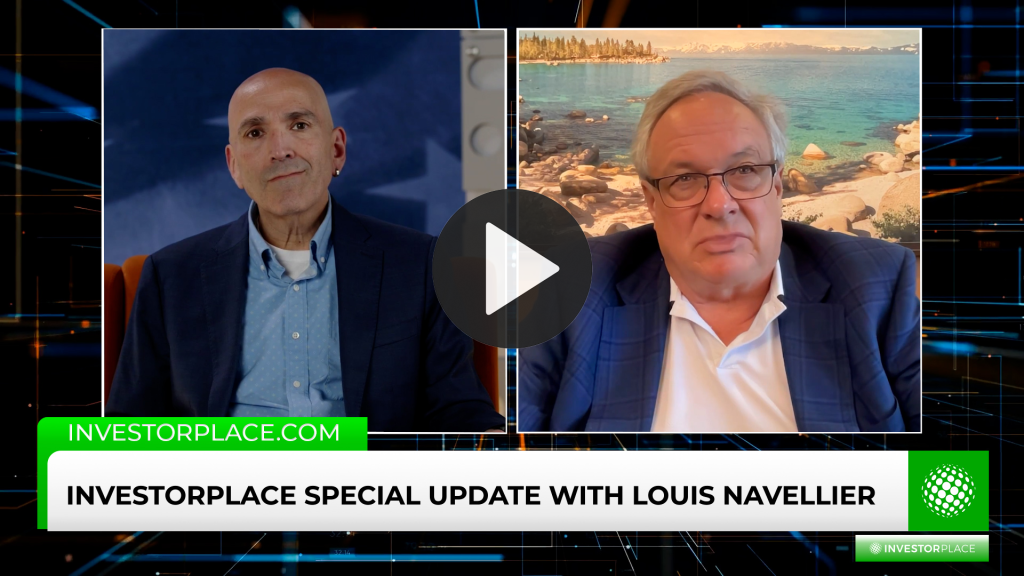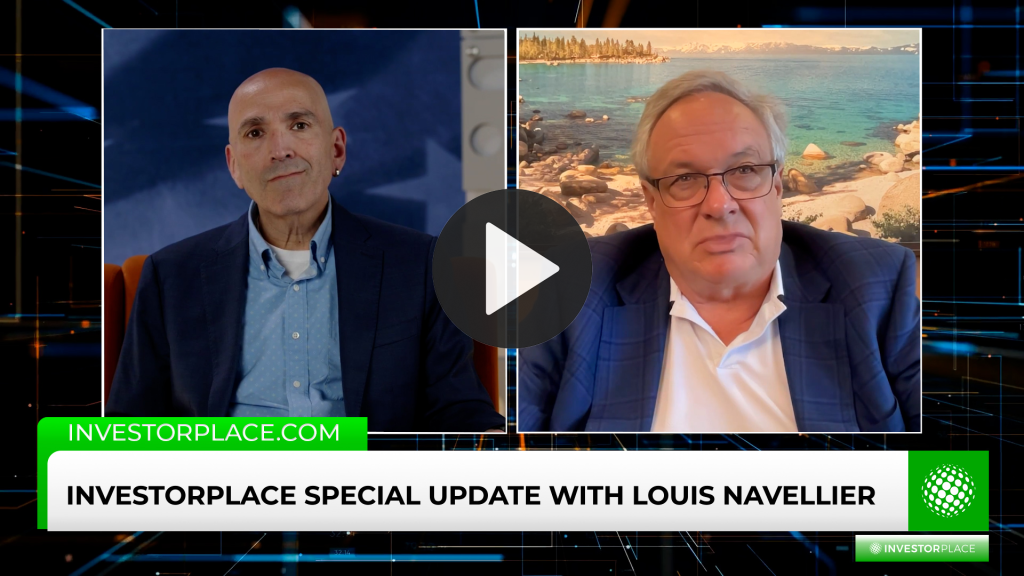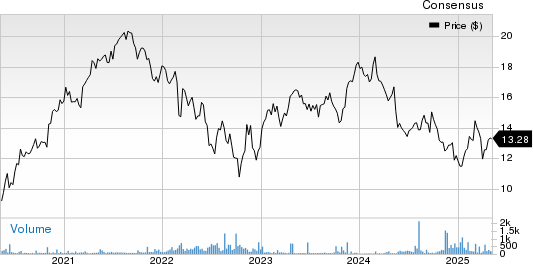Federal Reserve Holds Interest Rates Steady Amid Market Uncertainty
The Federal Reserve wrapped up its latest policy meeting yesterday, maintaining its current key interest rates as anticipated.
Fed’s Assessment on Inflation
In its policy statement, the Fed acknowledged that inflation “remains somewhat elevated.” During a press conference, Fed Chair Jerome Powell emphasized their “patient” approach, stating, “We think right now the appropriate thing to do is to wait and see how things evolve. There’s so much uncertainty.”
Market Developments and Trade Outlook
This sentiment may seem contradictory, especially with deflationary signs emerging across various sectors. Additionally, uncertainty surrounding trade appears to be lessening.
This morning, President Trump revealed a new trade deal with the United Kingdom, and more agreements are expected in the coming days. Furthermore, negotiations between the U.S. and China are set to commence this weekend in Switzerland.
Questions Surrounding Rate Cuts
Given these developments, what is preventing the Fed from reducing rates, and when might the next cut occur? These questions are addressed in a special video interview with Luis Hernandez, Editor-in-Chief of InvestorPlace. Insights on the Fed’s inaction and strategies for investors navigating the current market are also discussed.
Many will find my observations surprising, as I express my frustration with the central bank’s current stance.
To view the full video, click here or check the screenshot below.

The Global Context of Interest Rates
Ultimately, the Fed will be compelled to cut rates sooner or later, as we are witnessing a global decline in interest rates. Central banks from the European Union to the U.K. to China are reducing rates to address slowing growth or recessions.
With U.S. market rates higher, capital is flowing into the country, which is driving down rates on U.S. Treasuries. The Fed cannot continually oppose market rates.
Therefore, I predict there will be four rate cuts this year. Even though the Fed opted to hold steady yesterday, I stand by this forecast.
Investor Focus Moving Forward
Now that the Fed’s decision is behind us, investors should turn their attention to the first-quarter earnings season.
According to FactSet, 72% of S&P 500 companies have reported quarterly results, with 76% surpassing analysts’ earnings expectations. The average earnings surprise stands at 8.6%, with the S&P 500 projected to achieve 12.8% earnings growth for the quarter.
Although these numbers are strong, my Accelerated Profits stocks have performed even better.
Each of my Accelerated Profits stocks has averaged a stunning 32% earnings surprise. My Buy List currently features a significant 39.1% forecasted growth in earnings and 24.1% in sales. With positive analyst revisions, I anticipate continued strong results in the upcoming weeks, propelling my stocks higher!
Thanks to the solid fundamentals of these stocks, they do not rely on the Fed cutting rates to perform well in the current market.
If you prefer not to wait for the Fed or significant economic events to enhance your gains, consider Accelerated Profits.
This service offers rapid stock trading potential for quick gains, regardless of broader market conditions. Over the past year, subscribers have enjoyed substantial gains, including:
- 106.44% from Alamos Gold Inc. (AGI)
- 70.22% from GigaCloud Technology Inc. (GCT)
- 604.81% from Vista Oil & Gas (VIST)
- 135.05% from CECO Environmental Corp. (CECO)
- 114.49% from Targa Resources Corp. (TRGP)
Currently, my system has identified companies well-positioned to thrive during the next phase of the AI Revolution, which I refer to as the Trump/AI Convergence.
******************
Luis Hernandez:
Hi, I’m Luis Hernandez, Editor-in-Chief at InvestorPlace.
The market has felt stalled this week in anticipation of yesterday’s conclusion of the Federal Reserve Open Market Committee (FOMC) meeting…
# Federal Reserve Holds Interest Rates Steady Amid Economic Challenges
The Federal Reserve recently concluded its meeting, maintaining interest rates and aligning with market expectations. Rates remain unchanged between 4.25% and 4.5%, a level they have held since December. Investors were attentive to Fed Chairman Jerome Powell’s press conference, keen to hear any potential hints regarding future rate cuts in June or July.
President Donald Trump has consistently urged the Fed to lower rates. Just this past Sunday, he reiterated his call for immediate cuts, despite the current low probability of such an action.
Today, I’m joined by investment expert Louis Navellier to discuss Powell’s remarks, his predictions for forthcoming rate cuts, and the market’s trajectory. We will also explore stock market earnings and Navellier’s outlook for his portfolio in the coming quarters.
Louis Navellier: Thank you for having me.
Luis Hernandez: The Fed’s choice to keep rates unchanged was expected. You believe this decision is misguided. Could you elaborate on your perspective?
Louis Navellier: Certainly. There are two main reasons for my concern. First, current Fed rates exceed market rates, especially compared to the two-year Treasury yield. To align with market reality, they need to implement at least two cuts. Second, we are experiencing deflation. The last two Consumer Price Index (CPI) reports showed deflation, and the Producer Price Index (PPI) also reflected a flat trend. Most inflation is tied to housing; home builders are providing discounts to move properties.
I am currently in Reno, witnessing significant new home construction. Builders frequently advertise deals, and prices are declining across the board, affecting companies like Toll Brothers Inc. (TOL).
There are some positive signals regarding unemployment, which is a concern for the Fed. New unemployment claims have risen sharply. Some attributed this surge to seasonal factors, but the recent payroll report did not capture government layoffs. This trend may worsen in the coming months.
It is critical for the Fed to cut rates to address the unemployment issue. Meanwhile, European rates are likely to continue declining. The European Central Bank (ECB) has reduced rates seven times and may pursue further cuts. I maintain my view that the Fed could cut rates four times this year, as we are witnessing a global trend of falling interest rates.
Notably, China is facing particularly low rates, even below Japan’s. The Chinese government recently announced new stimulus efforts to bolster their struggling economy, which has raised concerns about potential currency devaluation.
The global economic landscape is challenging; many regions, including Asia, Mexico, Canada, Britain, France, and Germany, are nearing recession. The U.S. remains a relative stronghold, with a recent GDP decline offset by a notable 4.8% increase in imports, after a 41.3% gain in the first quarter. This adjustment indicates that we are not, in fact, in a recession.
For manufacturers globally, relocating to the U.S. may be an appealing option. Discussions with German industry contacts highlight their concerns, particularly regarding energy policies. German automakers such as BMW, Mercedes-Benz Group ADR (MBGYY), and Volkswagen Group (VWAGY) face the EU’s mandate to switch entirely to electric vehicles by 2035. Alternatively, they might consider American manufacturing, where energy costs are significantly lower. Trump is also advocating for visas to facilitate worker relocation.
Five southern states are providing attractive incentives for manufacturers, making relocation lucrative. Companies can continue producing internal combustion engines that they would need to phase out in Europe.
In this current climate, the U.S. stands resilient, characterized by strong household formation and workforce assimilation. Regardless of political outcomes, the nation is positioned as a beacon of opportunity, fostering free trade and economic growth. Recently, China has even reduced tariffs on various goods. China’s involvement with Scott Bessent in Switzerland suggests there may be future agreements on trade.
Luis Hernandez: It appears you’re tracking returns of manufacturing to the U.S. Do you have updated figures on this trend?
Louis Navellier: Yes, the figure is over $7 trillion. While it may take time, data centers are leading the charge, as they benefit from low energy costs available in the U.S.
These data centers often locate in regions with cheap electricity, such as areas near hydroelectric or nuclear facilities. North Carolina is a prime example. The need for high-speed internet connectivity also plays a crucial role; for instance, Reno is attractive due to major tech companies’ server farms being established locally.
As the AI industry grows, the expansion of U.S. data centers will undoubtedly be exciting. One current challenge is Super Micro Computer, Inc. (SMCI), where some clients prefer new components, causing minor sales fluctuations. Nonetheless, they continue to lead in water-cooled rack systems, which bodes well for their future growth.
# Earnings Season Shows Mixed Results Amid Market Uncertainty
Market observers have noted strong performances from certain stocks this earnings season, despite ongoing challenges posed by tariffs. Below are key insights into the current landscape.
## Earnings Highlights and Stock Reactions
Louis Navellier:
This earnings season has been remarkable overall. Some stocks have faced profit-taking immediately after earnings announcements. For instance, Powell Industries Inc. (POWL) exceeded sales expectations, yet the market reacted negatively due to a reporting error that caused algorithmic trading to misinterpret the results. Consequently, POWL presents a solid buying opportunity.
Restaurant chain Brinker International Inc. (EAT) is another example. Not only did it perform better than anticipated, but its stock also saw an increase. Nervous investors have been taking profits, but strong stocks often recover quickly. Historical trends suggest that such patterns typically lead to rebounds within a few days.
In the gold sector, Kinross Gold Corp. (KCG) announced robust results and subsequently saw its stock price surge.
## Consumer Confidence and Guidance Challenges
While the earnings results so far are encouraging, future guidance appears less optimistic. There are rising concerns about consumer confidence, as indicated by recent surveys. I tend to favor the Conference Board’s reports over those from the University of Michigan, as the former offers a clearer picture, despite showing significant declines.
As a nation, we need to remain optimistic. Treasury Secretary Scott Bessent is offering a supportive perspective, suggesting we shouldn’t let negativity sway us. Recent declines in treasury yields following the FOMC statement are also encouraging signs.
## Global Perspectives and Trade Situations
Despite some negative media narratives originating from Europe, it’s essential not to align our outlook solely with their views. Reports indicate that many Americans are struggling to pay their utility bills, but that does not encompass the full picture of the U.S. economy.
Luis Hernandez:
Agreed.
Louis Navellier:
However, it’s noteworthy that Mark Carney’s recent visit to the White House received mixed reactions. While President Trump praised him, he also made remarks hinting at a potential shift in tariffs if circumstances allow.
When analyzing global trade dynamics, it’s clear that major multinational companies are increasingly reliant on the American market. Countries like India are also stepping up their roles in manufacturing, particularly as alternatives to China.
## Analyst Expectations and Tariff Outlook
Luis Hernandez:
You highlighted an important trend regarding altering outlooks amidst earnings season. Can you explain why there’s so much uncertainty and its implications for analysts?
Louis Navellier:
My investment strategy closely follows analysts’ earnings forecasts. If those forecasts begin to decline, it poses challenges. Current market conditions suggest a wider variability in potential outcomes. Nevertheless, I believe tariffs will eventually lead to freer trade, as ongoing negotiations seek to dissolve many of the existing barriers.
The recent move by China to eliminate over one hundred tariffs is a positive step forward. However, the political landscape also shows signs of internal conflict within China, which could influence trade discussions moving forward.
## Domestic Food Imports and Economic Indicators
On a domestic front, the U.S. remains a net importer of agricultural products, which is surprising given its large agricultural base. Much of our imported food comes from Mexico, including tomatoes and avocados. This situation needs to be addressed.
Furthermore, I’ve observed that Manitoba, Canada, provides a significant amount of the pork consumed in the U.S. There are challenges related to supply chains, particularly in animal husbandry, echoed during the COVID-19 pandemic.
Luis Hernandez:
Looking ahead, especially with recent Federal Reserve discussions, what are your projections regarding interest rate cuts?
Louis Navellier:
Currently, market rates are above the Federal Reserve’s target rates. Although there are hints some cuts may be possible, the Fed remains in a restrictive position. Unemployment rates are slowly rising, suggesting continued financial constraints and potential deflation. Observations like gas prices indicate the Fed may not have a complete grasp on consumer realities. The upcoming decisions will be critical in shaping the economic landscape.
# Financial Insights: Analyzing Tariffs, Consumer Behavior, and Berkshire Hathaway’s Future
Discussion around economic data reveals an interesting perspective on inflation and deflation. Currently, the Federal Reserve appears to be data-dependent, yet they anticipate inflation that has yet to materialize.
With significant imports from China, there is a necessity to reassess economic strategies. PresidentTrump’s priority is ensuring that store shelves remain stocked, as empty shelves could negatively impact his standing. His meetings with executives from Home Depot Inc. (HD), Target Corp. (TGT), and Walmart Inc. (WMT) underscore the importance of maintaining consumer confidence.
At present, there’s a noticeable surplus of goods, attributed to slowed port activity. This slowdown reflects overstock rather than a logistical failure. As retailers navigate this situation, monitoring the price of TCL televisions could be revealing. Prices for TCL, a Chinese brand, remain low as they attempt to compete with industry giants like Sony Group Corp. (SONY) and Samsung.
Warren Buffett’s Retirement Raises Questions for Berkshire Hathaway
Warren Buffett recently announced his retirement after approximately 60 years with Berkshire Hathaway Inc. (BRK). While many have personal anecdotes about Buffett, his decision to step down raises questions regarding the company’s future.
Buffett’s retirement coincides with a significant decline in Berkshire Hathaway’s earnings, which dropped by two-thirds. The company, heavily involved in reinsurance, faced substantial claims due to recent wildfires in Los Angeles. However, lower interest rates could stabilize their bond portfolios, benefiting insurers overall.
Investors may be concerned about Berkshire’s collection of private businesses, including Borsheims, a jewelry store popular with households. The other notable establishment is Nebraska Furniture Mart, a massive retailer in Texas. Both businesses rely on imports from China, raising further questions on how tariffs will impact operations and pricing.
As Buffett steps back, the market will likely reevaluate the “Berkshire premium.” Investors are asking if Berkshire Hathaway can sustain its premium valuation without Buffett’s influence. The unknown values of their private businesses muddy the waters regarding potential declines, especially as the company shifts focus back toward its roots as a reinsurance heavyweight.
Luis Hernandez: Thanks for your insights, Louis.
Louis Navellier: Thank you.
Luis Hernandez: We appreciate your attention to these complex topics.
Louis Navellier
Editor, Market 360
Disclosure: As of this date, the Editor has direct or indirect ownership in the following securities mentioned: Alamos Gold, Inc. (AGI), CECO Environmental Corp. (CECO), and Targa Resources Corp. (TRGP).



